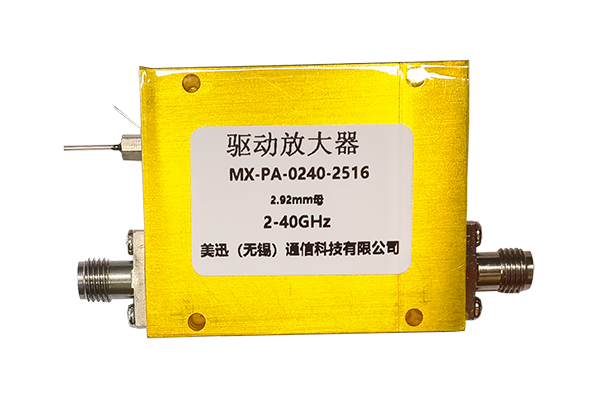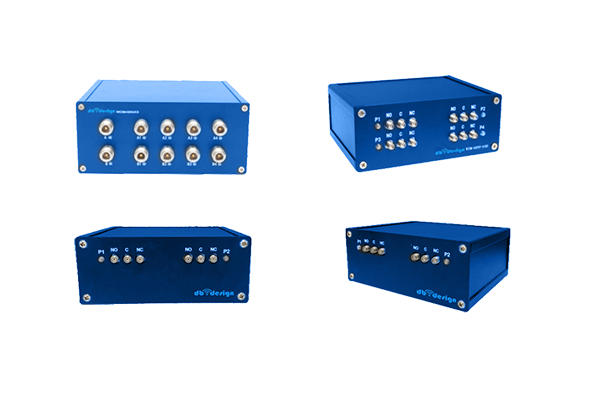
Pin diodes are widely recognized as vital components in RF systems because of their intrinsic functional attributes Their rapid transition between on and off states together with minimal capacitance and low insertion loss suits them for switching modulation and attenuation roles. The operative principle for PIN diode switching centers on bias-controlled current modulation. Voltage bias impacts the depletion layer width across the junction and consequently the conduction. Tuning the bias current allows PIN diodes to switch effectively at RF frequencies with reduced distortion
For applications demanding exact timing and control PIN diodes are typically incorporated into complex circuitry They can function inside RF filters to permit or attenuate targeted frequency bands. Moreover their high-power handling capability renders them suitable for use in amplification division and signal generation stages. The trend toward miniaturized highly efficient PIN diodes has broadened their applicability in modern technologies like wireless communications and radar
Performance Considerations for Coaxial Switch Engineering
Developing coaxial switches is complicated and depends on careful analysis of key parameters A switch’s performance is determined by its type frequency range and how well insertion loss is controlled. Coaxial switch optimization emphasizes low insertion loss combined with high interport isolation
Performance studies concentrate on return loss insertion loss and isolation measurements. Such parameters are usually determined via simulations analytic models and physical experiments. Accurate analysis is crucial to ensure reliable coaxial switch operation across systems
- Simulations combined with analytic methods and practical experiments are standard for coaxial switch evaluation
- Temperature, mismatched impedances and manufacturing variances often have strong effects on switch performance
- Recent advances emerging trends and novel developments in coaxial switch design focus on improving metrics while reducing size and power use
Strategies to Optimize LNA Performance
Improving LNA performance efficiency and gain is key to maintaining high signal fidelity across applications This requires careful selection of transistors bias conditions and circuit topology. High quality LNA layouts suppress noise sources and deliver amplified signals with limited distortion. Design evaluation relies heavily on simulation and modeling tools to measure noise effects of various choices. Reducing the Noise Figure remains the design target to ensure strong signal retention with minimal added noise
- Prioritizing low-noise transistors is crucial for optimal LNA performance
- Establishing proper bias conditions with optimal settings minimizes noise within transistors
- Topology of the circuit strongly affects total noise performance
Approaches such as matching networks noise suppression and feedback loops help improve LNA behavior
RF Routing Strategies with PIN Diode Switches

PIN diode switches serve as practical and efficient solutions for directing RF signals in many systems Fast state changes in these devices permit agile dynamic routing of RF signals. Key benefits include minimal insertion loss and strong isolation to limit signal deterioration during switching. Typical applications include antenna switching duplexing and RF phased arrays
A PIN diode switch’s operation depends on modulating its electrical resistance with a control voltage. When off the diode’s high resistance isolates and blocks the RF path. With forward bias the diode’s resistance diminishes permitting the RF signal to flow
- Further advantages include fast switching low power requirements and compact design of PIN diode switches
Multiple architectures designs and configurations of PIN diode switch networks can be constructed to deliver advanced routing functions. Strategic interconnection of many switches yields configurable switching matrices for versatile path routing
Evaluation of Coaxial Microwave Switch Performance

Thorough assessment and testing of coaxial microwave switches are necessary to guarantee reliable system operation. Diverse factors including insertion reflection transmission loss isolation switching speed and frequency span impact performance. A comprehensive evaluation process involves measuring these parameters under a variety of operating environmental and test conditions
- Furthermore the testing should cover reliability robustness durability and resistance to harsh environmental influences
- Finally the result of robust evaluation gives key valuable essential data for choosing designing and optimizing switches to meet specific requirements
Review of Techniques to Reduce Noise in Low Noise Amplifiers
LNAs serve essential roles in wireless RF systems by amplifying weak signals and curbing noise. The paper provides a comprehensive examination analysis and overview of techniques aimed at lowering noise in LNAs. We analyze investigate and discuss main noise origins such as thermal shot and flicker noise. We further analyze noise matching feedback topologies and bias optimization strategies to suppress noise. It presents recent developments like new semiconductor materials and fresh circuit architectures that lower noise figure. With a complete overview of noise minimization principles and methods the review supports the design of high performance RF systems by researchers and engineers
PIN Diode Uses in Rapid Switching Systems

PIN diodes possess remarkable unique and exceptional traits that fit them well for high speed switching systems Reduced capacitance and low resistance yield fast switching performance suitable for strict timing control. Moreover PIN diodes exhibit linear proportional responses to applied voltage enabling precise amplitude modulation and switching control. This flexible adaptable versatile behavior makes PIN diodes suitable applicable and appropriate for varied high speed roles Examples of deployment include optical communication systems microwave circuits and signal processing equipment and devices
IC Based Coaxial Switch and Circuit Switching Technologies
Integrated circuit coaxial switching technology brings enhanced capabilities for signal routing processing and handling within electronics systems circuits and devices. Specialized ICs manage control and direct signal transmission through coaxial cables ensuring high frequency performance and minimal propagation latency. IC miniaturization enables compact efficient reliable and robust designs ideal for dense interfacing integration and connectivity needs
- By meticulously carefully and rigorously adopting these practices designers can deliver LNAs with excellent noise performance supporting reliable sensitive systems By meticulously carefully and rigorously applying these methods developers can produce LNAs with superior noise performance enabling sensitive reliable electronics With careful meticulous and rigorous execution of these strategies designers can obtain LNAs exhibiting excellent noise performance for sensitive reliable systems By meticulously carefully and rigorously applying these methods developers can produce LNAs with superior noise low-noise amplifier performance enabling sensitive reliable electronics
- Deployment areas span telecommunications data communications and wireless networking environments
- Aerospace defense and industrial automation are key domains for integrated coaxial switch technology
- These technologies appear in consumer electronics A V gear and test and measurement setups
mmWave LNA Engineering Considerations

Designing for mmWave requires accounting for high attenuation and pronounced noise effects. At millimeter wave ranges parasitics dominate so meticulous layout and selection of components is essential. Input matching minimization and power gain maximization are critical essential and important for mmWave LNAs. Devices such as HEMTs GaAs MESFETs and InP HBTs are important selections to meet low noise figure goals at mmWave. Additionally furthermore moreover careful design implementation and optimization of matching networks is vital for efficient power transfer and impedance matching. Attention to package parasitics is crucial as they have potential to harm mmWave LNA performance. Applying low loss transmission lines and meticulous ground plane design is essential necessary and important to lower signal reflection and keep bandwidth
Modeling Strategies for PIN Diode RF Switching
PIN diodes are critical components elements and parts in many RF switching applications systems and contexts. Exact detailed and accurate characterization of these devices is essential for the design development and optimization of reliable high performance circuits. Included are analyses evaluations and examinations of electrical voltage and current characteristics such as resistance impedance and conductance. Characterization also covers frequency response bandwidth tuning capabilities and switching speed latency or response time
Furthermore developing precise models simulations and representations for PIN diodes is crucial essential and vital to forecast performance in complex RF systems. Different numerous and various modeling strategies are available including lumped element distributed element and SPICE models. Choosing the proper model relies on the specific application requirements and the desired required expected accuracy
State of the Art Techniques for Low Noise Amplifier Design
Developing LNAs involves diligent consideration of circuit topology and components to obtain optimal noise performance. Recent semiconductor breakthroughs and emerging technologies enable innovative groundbreaking sophisticated noise reduction design techniques.
Examples of techniques are implementing employing and utilizing wideband matching networks choosing low noise transistors with strong intrinsic gain and optimizing biasing schemes strategies and approaches. Additionally advanced packaging and thermal management practices are critical for minimizing external noise influences. With careful meticulous and rigorous execution of these strategies designers can obtain LNAs exhibiting excellent noise performance for sensitive reliable systems
